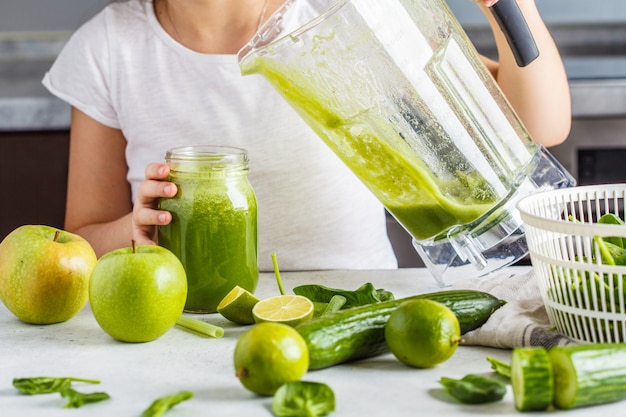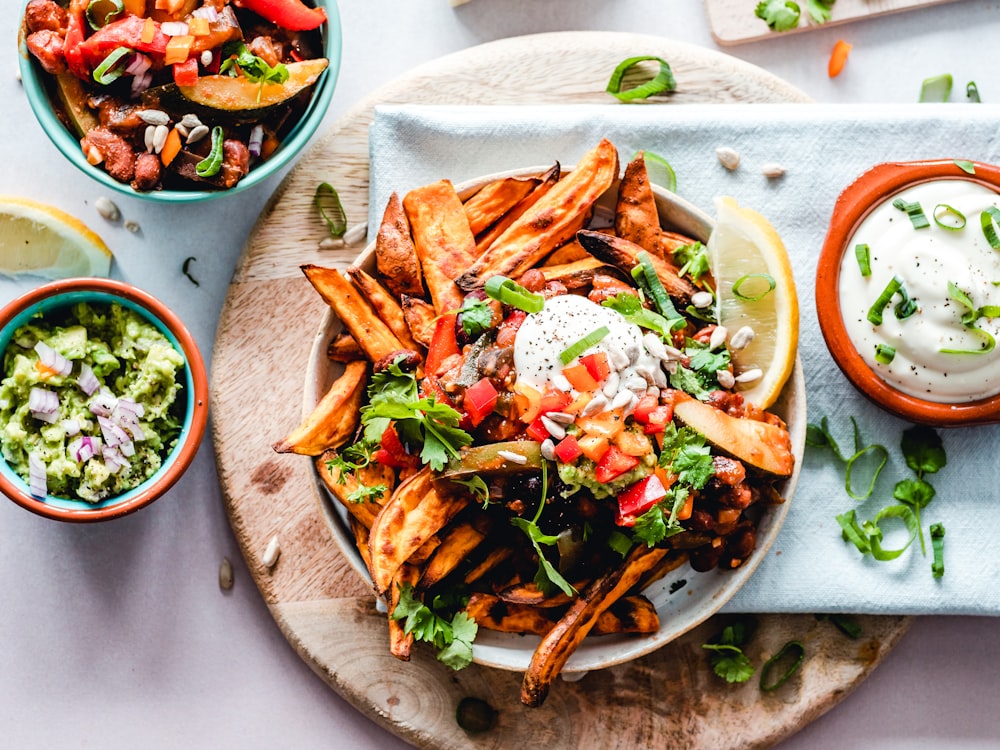Tips for Eating a Plant-Based Diet
There’s no doubt that adopting a whole foods plant-based diet can be life-changing for your health, but making the transition to any diet can be daunting or confusing if you’ve never tried it before. Even if you are committed to this diet choice, some days can feel overwhelming if you don’t have a plan in place.

Why start a plant-based diet?
A plant-based diet calls for eating more plant foods like whole grains, fruits, veggies, nuts, legumes, and healthy plant oils (including olive or avocado) and fewer processed, prepackaged foods. When you are focused on eating a variety of plants, animal foods like dairy, eggs, fish, and meat will naturally decrease to smaller portions or maybe even be eliminated.
Growing evidence proves that plant-based diets can help you avoid health problems like heart disease and kidney damage. For example, some studies show that people suffering from kidney disease who followed a plant-based diet lived longer than those whose diets were mainly animal-based.
Nevertheless, transitioning to a plant-based diet does not mean that you have to become a vegetarian and eliminate all sources of animal protein from your diet. Swapping out animal protein with plant protein for 2 out of your 3 meals per day can be sufficient to offer the health benefits of a plant-based diet, particularly anyone suffering from chronic disease.

Here are some simple tips for transitioning to a plant-based diet, to benefit your health, your family’s health and the environment:
Go slow with your transition to plant-based eating.
Forcing yourself to go all in with plant-based instantly can shock your system and leave you feeling intensely drained and nutritiously deprived. Our bodies need time to adjust to their new nutritionally dense (but probably less caloric dense) choices. Additionally, the brain needs time to adjust and incorporate your new healthy eating habits to make the change sustainable. Try 1 plant-based meal a day. Then add more meals and see how you feel and what you can manage efficiently.
Related read: Monthly Meal Planning Ideas: How to Create a Monthly Meal Planner
Join a community of like-minded plant-based eaters.
Whether it is for health, animals or the environment, when you first plan to start your plant-based lifestyle, it can feel daunting and isolating. You might find yourself asking: ‘Where should I even start?’ or ‘What can I do in social get-togethers?’.
The world is more connected than ever before. There are online plant-based communities that exist all over the world; people that are actually trying to help and support you in your journey. This can be a great place to share ideas, get inspired and feel empowered in your healthy eating decision.
Depending on where you are from, there may already be a local group that you can join. Search on social channels or google ‘plant-based’ or ‘vegan’ and something is bound to come up.
Here are a few groups that are highly recommended:
Make Simple Food Swaps to Ace Your Plant-Based Diet
Slowly but steadily try to add more plant-based foods into your diet. Don’t think of it as restricting, but replacing! Swap some of your favorite unhealthy foods for a healthy alternative.
For example, you could use;
- avocado instead of cheese
- tofu instead of chicken (make sure it’s organic)
- black bean burgers instead of beef
- dates instead of white sugar
- whole grain instead of white flour
Here are some easy everyday swaps and recipes to help you eat more plant-based.

Plan ahead to stay on top of your eating game.
When you’re hungry, your blood sugar level goes down and you may find yourself making unhealthy choices and raiding the junk drawer. By planning ahead every week, you go into the week ready with a kitchen stocked full of nutritious plant-based food. Plus, it really can help make grocery shopping and meals significantly easier.
Clean out your kitchen.
Get rid of all the junk now. Don’t wait to “finish it off.” Get the temptations out of your kitchen and you give yourself now choice but to start eating healthy. Stock up on dried goods (such as beans and whole grains) and load your fridge with scrumptious fruits and veggies. Be sure to stock a good amount of healthy snacks and ingredients for simple to prepare meals.
Eat more vegetables.
Starting adding a side (or two) or raw or cooked veggies to each meal as you start to phase out some of the other items on your plate. 5 servings of fruits and veggies are recommended but ideally you should be getting 10 servings! So load up your plate! Be careful to not overload your stomach too suddenly. Adjust gradually if you are boosting your veggie intake so your stomach can adjust, and you get diarrhea or excessive gas and bloating. Some easy go to recipes for maximizing your veggies intake include pureed soups and smoothies. If you’re worried about getting enough protein, keep in mind that many veggies contain protein too!
Be creative with salads.
Different vegetables get their color from a wide range of vitamins, nutrients and antioxidants. So shoot for a beautiful rainbow when you get the chance. Plus, add a variety of delicious healthy ingredients to your salads such as toasted nuts or seeds, grains such as rice or quinoa, legumes, roasted tofu or tempeh, or other ingredients you are used to. Spend some time in the produce section and find out the various options that are available seasonally. Don’t forget to include a serving of healthy fat, such as olive oil, to maximize your body’s ability to absorb all those good nutrients!
Here are some salad recipes to try.
Add superfoods to your breakfast.
Whether its pancakes, smoothies, eggs or oatmeal, giving yourself a nutrient dense punch can be simple. Adding superfoods like hemp seeds, chia seeds, ground flax seeds, cacao nibs or nut butter (including almond or sesame), can give a variety of nutrients to your morning routine.
Here are some superfood breakfast ideas.
Buy a good blender.
Making nutritious smoothies every morning (or even for an afternoon snack) should be a staple since it’s not just full of nutrient-dense superfoods like kale and spirulina, but it keeps you energized and your blood sugar balanced throughout the day. No one likes eating weird leftover chunks or dealing with an overheated appliance, so make sure to buy a good quality blender. (I personally have an old school Vitamix that I love, they last forever!)
Make ethnic spice blends.
Spices can give you taste buds a whole new experience and introduce you to a whole new world of cooking. Plus, superfood spices like garlic and turmeric will give you additional benefits. Making ethnic spice blends offers you the World’s cuisine. Add them to your stir-fries, soups, and even a simple rice dish to easily boost the flavor of your meals. Think about starting with Pakistani, Italian, Mexican, and Indian blends. Then go for Ethiopian, Moroccan, French, and others. The sky is the limit!
Learn to make different sauces.
The right sauce can make a meal, even if that meal is as simple as veggies, rice, and tofu. Sauces are super easy to make and extremely flavorful. Think peanut sauces (made with natural peanut butter), coconut curries, simple tomato sauces, pestos, etc.
Check out these easy plant-based sauces.
Always drink water instead of sugary drinks to maximize your plant-based diet.
Replacing soda and other sugary drinks with water is a simple way to cut out extra calories in your diet. Otherwise, ingredients from the soda will literally leach those great nutrients from your body. And you don’t always have to drink your water, you can also eat fruits and veggies that have mostly water to help you feel fuller and keep you hydrated.
Strawberries, squash, eggplant, and cantaloupe are almost 90-99% water.
Avoid hanger, carry snacks with you all the time.
When hunger kicks in and you’re actually craving some junk food you’ll be happy that you put that protein bar in your bag. This can really help keep you full until your next meal and say goodbye to all junk foods.

Keep it simple and keep it enjoyable! Plant-based eating should be fun!
Going 100% whole food plant-based at once may work for some, but it takes a lot of willpower to stay on track. The change can be so dramatic that many fall off the track after a few days and head back to excessive animal products and processed food. No doubt, this is very dependent on where you come from and your mindset. The change won’t be so strange if you are already on a diet that is full of fruits, vegetables, grains, and legumes.
What I eat in a day.
I love to get creative, try new things and enjoy the journey of eating a plant-based diet. Now that I have been eating mostly plant based for several years now, I love how simple and delicious my favorite meals are, such as veggie stir fry, pad thai, and homemade veggies burgers. I personally try to eat a simple nutritious plant based breakfast, one large salad per day (with plant-based proteins or a free range egg) and the other meal is 75% veggies and 25% “protein” (sometimes vegetarian, sometimes not!). I was vegetarian for the past 2 years and just started incorporating some sustainable organic meat back into my diet. So far so good! I’d love to hear what your ideal eating plan looks like in the comments or via email.
Do you have tips or favorite recipes to share with us? Write in the comments below.






